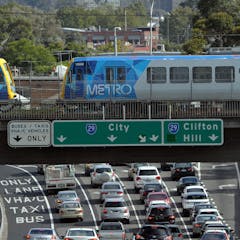
Articles on Cities
Displaying 741 - 760 of 1508 articles

A decade after Toronto produced the first Vitals Signs report, community foundations in Melbourne and other cities are using these reports’ up-to-date data to inform their decisions.

Tree plantings are making a visible difference to Melbourne’s west. It’s the result of a collaborative model of greening, one that Australian cities need to apply more widely.

Promoting individual resilience will contribute to reductions in disaster threats for at-risk communities globally.

The challenge of creating liveable communities across Australia’s capital cities comes down to seven key factors. And assessed on this basis, parts of our cities don’t fare so well.

Excessive indulgence is the city’s unifying theme. It’s also a way to end your life. Just ask Stephen Paddock.

Our ageing population presents several social and economic challenges, particularly for the health sector. Physical activity can tackle many of these.

In the country’s wealthiest cities, gentrification is a dirty word. But it’s all relative – just ask Hartford and Columbus.

The states that are delivering more affordable housing have sophisticated, multi-pronged strategies to serve the full range of needs.

No matter whether competitive tendering or negotiation is used, operators that do not meet clear and transparent service benchmarks should be shown the door.

Digital media on building facades are changing the appearance of our cities. This creates a need for new urban policy guidelines to retain architectural quality and promote social engagement.

Future extreme heat is worse and coming sooner than you might think. Unless we mitigate and adapt we face increasing death rates.

Depite new technologies for music dissimination, EDM artists located in cities have access to resources not available in non-metropolitan areas.

City living costs are driving people to organise themselves to share a room with strangers. These precarious living arrangements hardly qualify as a home.

It’s clear autonomous vehicles will disrupt our cities, their land use and planning. Whether they make urban life better or worse depends on how well we anticipate and adapt to their impacts.

Instead of focusing on freeways, governments should change the way we pay for urban roads and public transport.

A common theme from science fiction is a vision of a world where humans do less work and machines do more. Why have we not yet reached that point?

A new study shows major Australian cities are suffering an overall loss of green space –
although some areas are doing better than others.

The use of small devices to measure the presence of fine particles in the air is becoming widespread. They’re one more weapon to fight against air pollution, but questions remain on their reliability.

Berliner’s may have won the latest battle to keep Tegel airport open, but they are unlikely to win the war.

The way land titles are issued, bought and sold will soon be very different, thanks to privatisation and technology.
